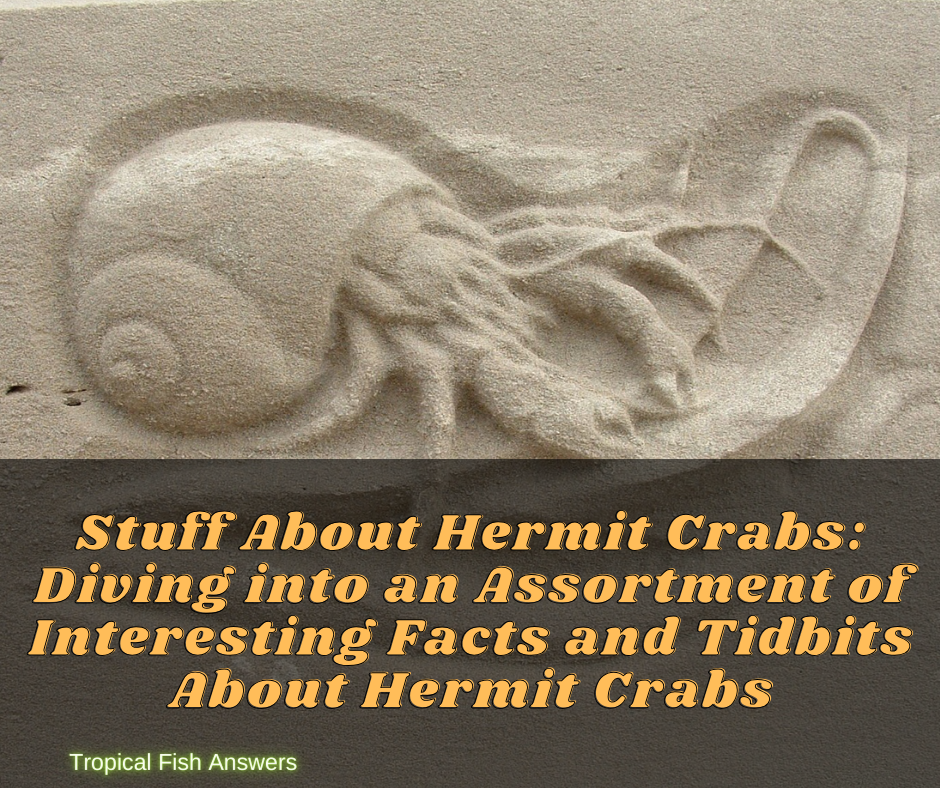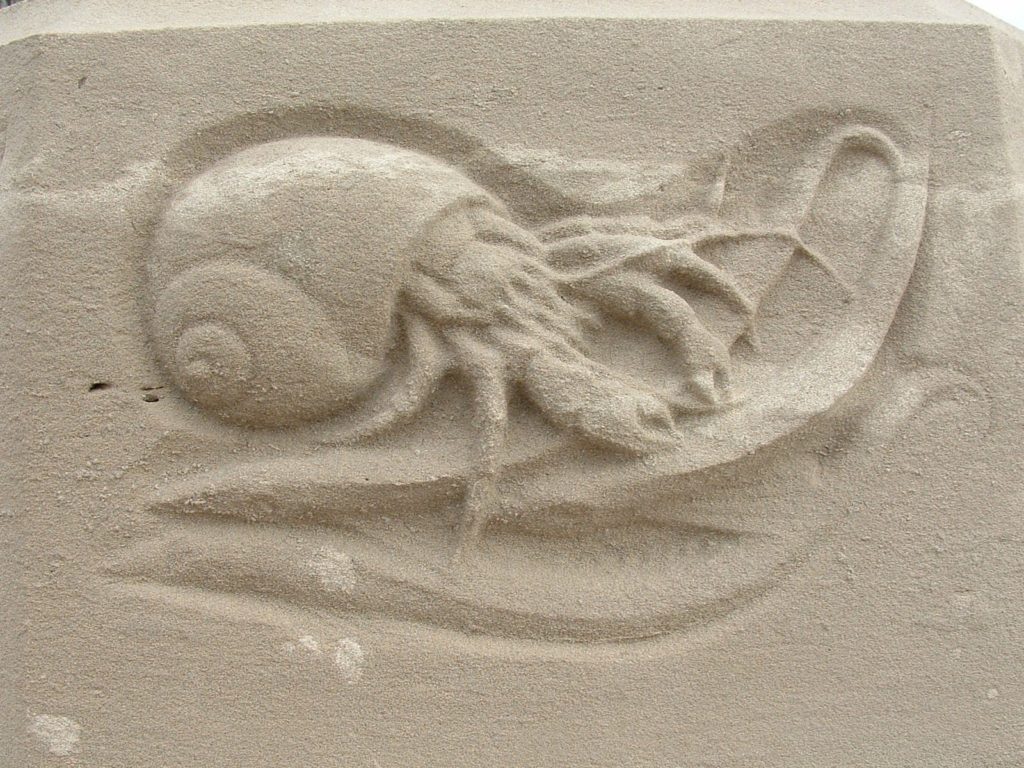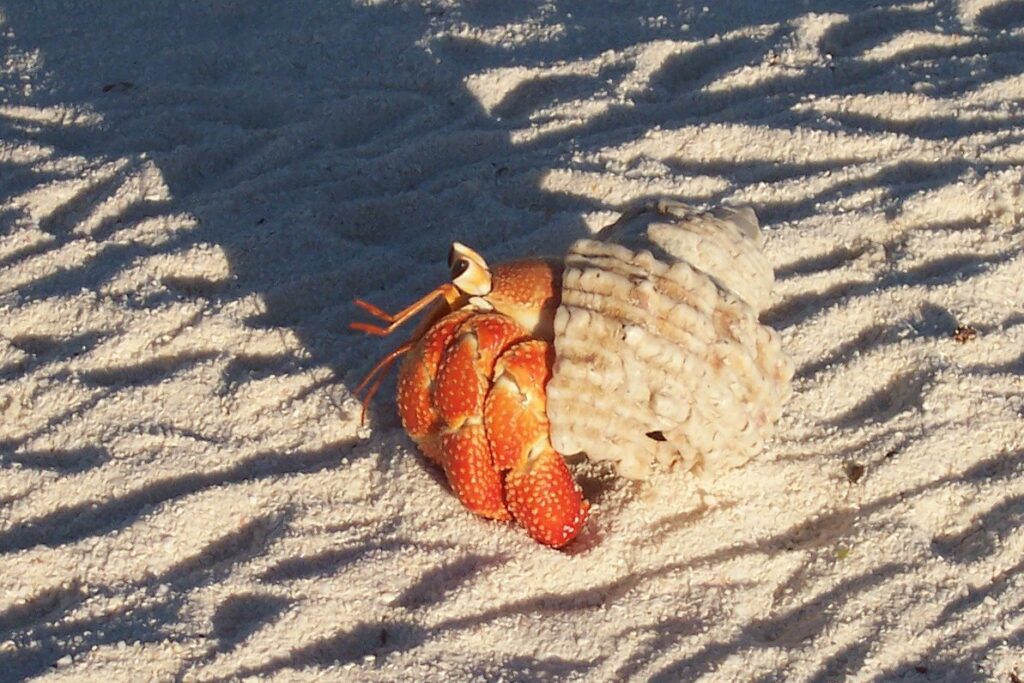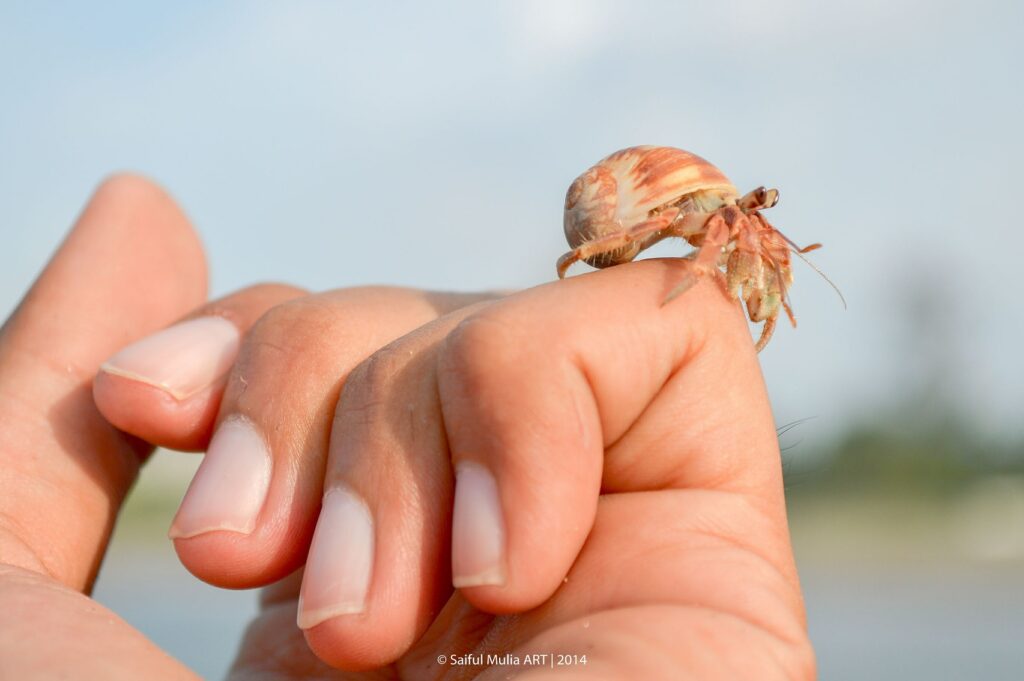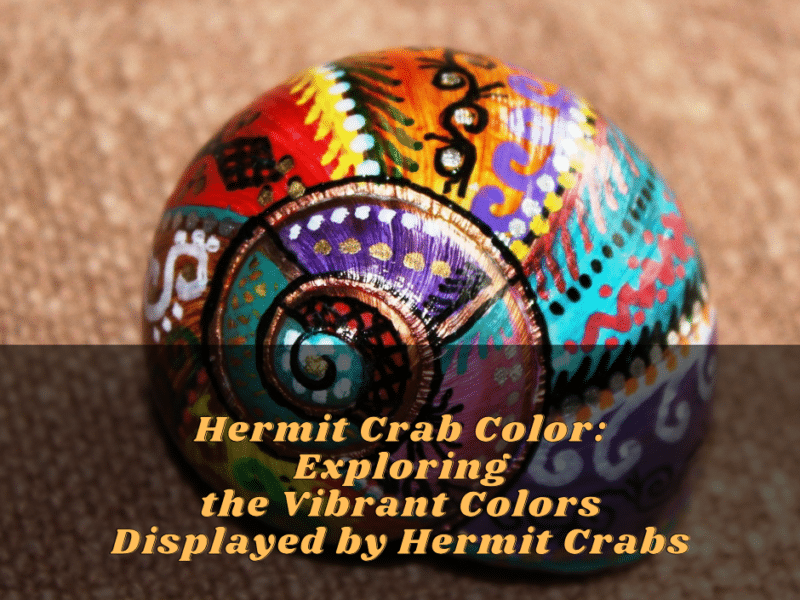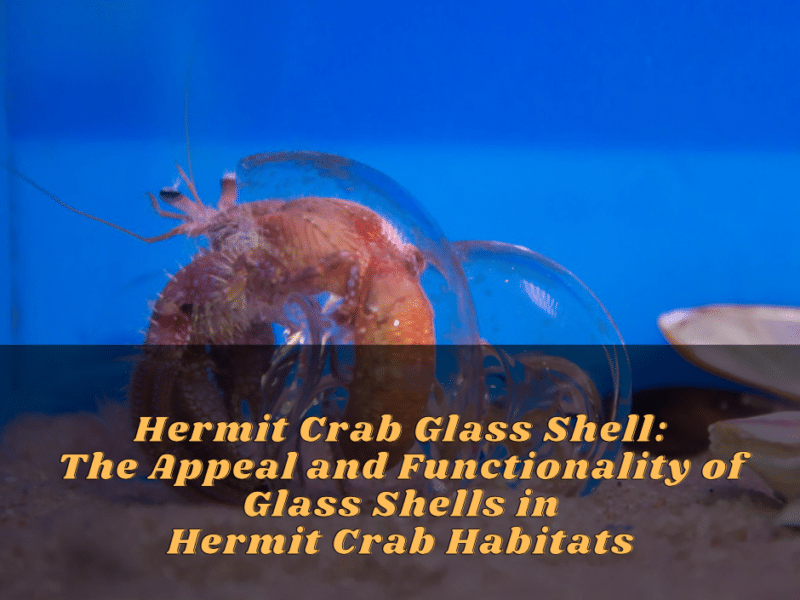Stuff About Hermit Crabs: Diving Into An Assortment Of Interesting Facts And Tidbits About Hermit Crabs
Introduction
Have you ever come across those small creatures with shells walking sideways along the beach? Well, those are hermit crabs! Fascinating and unique, hermit crabs have captured the attention of many curious individuals. In this article, we will explore what hermit crabs are and delve into an assortment of interesting facts and tidbits about these captivating creatures.
What Are Hermit Crabs?
Hermit crabs are marine crustaceans that belong to the superfamily Paguroidea. They possess soft, asymmetrical abdomens that they protect by occupying empty snail shells. As they grow, hermit crabs outgrow their shells and search for larger ones to move into.
Fascinating Facts About Hermit Crabs
- Shell Swapping: Hermit crabs regularly switch shells, with each crab’s preference and availability playing a role in their choice. This behavior allows for flexibility and adaptability as they explore various housing options.
- Social Creatures: Contrary to their name, hermit crabs are social animals and are often found in groups. They communicate through various means, including chemical signals and antennae touches.
- Amazing Adaptation: Hermit crabs have a soft and vulnerable abdomen, which they protect by utilizing shells for shelter. They have a specialized structure known as a ‘cloaca,’ which helps them breathe through moist gills.
- Diversity in Species: There are over 1,100 species of hermit crabs found in diverse marine environments worldwide. These species exhibit fascinating variations in size, behavior, and coloration.
- Feeding Habits: Hermit crabs are omnivorous, feeding on both plant and animal matter. They scavenge for food, consuming algae, decaying organic material, small invertebrates, and even dead animals.
- Molting Process: As hermit crabs grow, they shed their exoskeleton in a process called molting. During this time, they retreat into their shell, softening and shedding their exoskeleton before growing a new, larger one.
- Longevity: Depending on the species and environmental conditions, hermit crabs can live for several years, with some larger species having lifespans of up to 30 years.
- Resourceful Habits: Hermit crabs are known for their resourcefulness and ability to use objects in their environment. They have been observed using sponges and other materials as protective covering when suitable shells are scarce.
In conclusion, hermit crabs are intriguing creatures that have captured the interest of many due to their unique behaviors and adaptations. From shell swapping to their resourceful habits, these fascinating crustaceans continue to surprise and captivate those who encounter them. So, the next time you spot a hermit crab on the beach, take a moment to appreciate their incredible nature and the wonders of the marine world.
Hermit Crab Species
Overview Of Different Hermit Crab Species
Hermit crabs are a diverse group of crustaceans, with over 1,100 species found in various marine environments worldwide. Each species showcases unique characteristics that make them fascinating to study and observe. Here, we will provide an overview of a few different hermit crab species.
One notable species is the Caribbean hermit crab (Coenobita clypeatus), commonly found in tropical waters. Known for their vibrant colors and large size, Caribbean hermit crabs are popular pets and are often seen scurrying along the sandy beaches.
The Halloween hermit crab (Ciliopagurus strigatus) is another intriguing species. They are named for their distinctive orange and black coloration, resembling Halloween decorations. These crabs can be found in the Indo-Pacific region and are known for their preference for the anemone shells.
The blue-legged hermit crab (Calcinus elegans) is a species found across the Indo-Pacific. They stand out due to their bright blue legs which contrast beautifully against their reddish-brown or blackish body. These crabs are often found in shallow waters and coastal areas.
Unique Characteristics Of Each Species
Each hermit crab species possesses distinct features that set them apart from one another. For example, the Caribbean hermit crab has specialized legs adapted for climbing trees, allowing them to feed on fruits and leaves. They have powerful claws that provide protection and aid in obtaining food.
Halloween hermit crabs have a symbiotic relationship with sea anemones. They use the anemone shells for camouflage and protection, while the anemones benefit from the transportation and food source that the crabs provide. This mutualistic relationship is fascinating to observe.
Blue-legged hermit crabs have a unique adaptation where they maintain a symbiotic relationship with sea squirts. They cover their shells with sea squirt colonies, which not only helps camouflage them but also provides a constant source of food.
Overall, the diverse species of hermit crabs exhibit a wide range of unique characteristics that make them a captivating subject of study. From their vibrant colors to their interesting symbiotic relationships, hermit crabs continue to fascinate researchers and enthusiasts alike with their intriguing behaviors and adaptations in different marine environments.
Hermit Crab Behavior And Habitat
How Do Hermit Crabs Behave?
Hermit crabs exhibit fascinating behaviors that make them unique and intriguing creatures. Here are some insights into their behavior:
- Shell Dwelling: Hermit crabs are known for their habit of living inside the empty shells of other marine organisms. They use these shells as portable homes, carrying them around and exchanging them as they grow. This behavior allows them to protect their soft and vulnerable abdomens.
- Nocturnal Activity: Most hermit crabs are primarily active during the night. They venture out of their shells to search for food, socialize with other hermit crabs, and explore their surroundings. During the day, they retreat into their shells for protection and rest.
- Social Interactions: Hermit crabs are social creatures and often gather in groups called “clusters” or “congregations.” These gatherings serve as opportunities for them to interact, mate, and find suitable shells to exchange.
- Molting: Like many crustaceans, hermit crabs undergo a molting process, where they shed their exoskeleton to grow. During this time, they are vulnerable and seek shelter until a new exoskeleton forms. Molting can take several weeks, and hermit crabs may occasionally eat their old exoskeleton to replenish lost minerals.
Insights Into Their Natural Habitat
Hermit crabs can be found in various marine environments worldwide. Here are some insights into their natural habitat:
- Coastal and Intertidal Areas: Hermit crabs are commonly found in coastal regions, especially sandy beaches and rocky shorelines. They thrive in intertidal zones, where they can easily access both land and sea.
- Tropical Waters: Many hermit crab species are native to tropical waters, particularly in regions like the Caribbean and the Indo-Pacific. These warm waters provide the ideal conditions for their growth and reproduction.
- Substrate Preference: Hermit crabs prefer sandy or muddy substrates where they can easily bury themselves or find suitable shells. They dig burrows and use them as shelter during the day, emerging at night to search for food.
- Marine Biodiversity Hotspots: Some hermit crab species thrive in areas known for their rich marine biodiversity, such as coral reefs. These environments provide abundant food sources and various types of shells for them to occupy.
Overall, hermit crabs display intriguing behaviors and have adapted to thrive in diverse marine habitats. Their unique ability to carry and exchange shells, combined with their social interactions and nocturnal activities, makes them a captivating subject of study for researchers and enthusiasts alike.
The Life Of A Hermit Crab
Life Cycle Of Hermit Crabs
Hermit crabs have a unique and fascinating life cycle that involves various stages of growth and adaptation. Let’s dive into the life cycle of these intriguing creatures:
- Egg Stage: The life of a hermit crab begins with a female crab laying and fertilizing eggs. She carries the fertilized eggs in a mass attached to her abdomen until they hatch.
- Larvae Stage: Once the eggs hatch, the larvae are released into the ocean. These larvae navigate through the water, feeding on plankton, and undergoing several molts as they grow.
- Juvenile Stage: After the larvae go through multiple molts, they develop into juvenile hermit crabs. At this stage, they start seeking shelter in empty shells to protect their soft abdomens. They frequently change shells as they grow.
- Adult Stage: As the hermit crabs continue to grow, they transition into the adult stage. They become sexually mature and engage in the mating process to reproduce and continue the life cycle.
Mating, Reproduction, And Growth Stages
Hermit crabs have unique mating behaviors and reproduction methods. Here are some key points about their mating, reproduction, and growth stages:
- Mating Rituals: Hermit crabs engage in courtship rituals, which involve displaying their shells and performing dances to attract a mate. Once a mate is found, the female releases pheromones to initiate the mating process.
- Egg Laying: After mating, the female carries the fertilized eggs until they hatch. She attaches the eggs to specialized appendages called pleopods on her abdomen. The eggs are then protected and nourished until they are ready to hatch.
- Growth and Shell Exchange: As hermit crabs grow, they shed their exoskeletons through molting. During molting, they leave their old shells and find a larger one to occupy. The process of finding suitable shells can sometimes lead to fights between crabs.
- Regeneration: In the event of a limb loss, hermit crabs have the ability to regenerate their limbs during subsequent molts. This adaptation allows them to recover and continue their normal activities.
Understanding the life cycle, mating rituals, and growth stages of hermit crabs provides valuable insights into their survival and adaptation strategies. These intriguing creatures have evolved unique mechanisms to ensure their continued existence in the diverse marine habitats they inhabit.
Hermit Crab Adaptations
Adaptations For Survival
Hermit crabs have evolved several fascinating adaptations that help them survive in their unique environments. Here are some key adaptations that make these crustaceans remarkable:
- Protective Shells: One of the most notable adaptations of hermit crabs is their use of empty shells as protective homes. As hermit crabs grow, they must find a larger shell to accommodate their increasing size. They rely on discarded snail shells or other mollusk shells to provide protection from predators.
- Camouflage: To further protect themselves from predators, hermit crabs have developed the ability to camouflage. They selectively attach shells and other materials, like seaweed and rocks, to their own shells, blending in with their surroundings. This adaptation helps them remain hidden and safe.
- Strong Claws: Hermit crabs have powerful claws that they use for various purposes. Their claws help them defend themselves against predators, break open tough food, and even dig burrows in the sand or mud.
- Ability to Regenerate: If a hermit crab loses a limb in a fight or other accident, it has the remarkable ability to regenerate it during subsequent molts. This adaptation allows the crab to recover and continue its normal activities.
Importance Of Shells And Camouflage
Shells play a vital role in the life of a hermit crab. They provide protection and serve as mobile homes that the crabs carry with them wherever they go. Without shells, hermit crabs would be incredibly vulnerable to predation.
The process of finding suitable shells is crucial for the survival of hermit crabs. As they grow larger, they must constantly search for and switch shells to accommodate their increasing size. Finding an empty shell that fits properly is essential as it ensures the crab’s ability to retract safely inside and protect its soft abdomen.
Camouflage is another important adaptation that helps hermit crabs blend into their surroundings. By attaching debris and other materials to their shells, they become nearly indistinguishable from their environment. This camouflage allows them to remain hidden from predators and increases their chances of survival.
In conclusion, hermit crabs have developed remarkable adaptations for survival, including the use of protective shells, camouflage, strong claws, and the ability to regenerate lost limbs. Understanding these adaptations provides valuable insights into the fascinating world of these unique crustaceans.
Hermit Crab Diet And Feeding Habits
Omnivorous Nature Of Hermit Crabs
Hermit crabs have a diverse and adaptable diet, making them omnivorous creatures. They consume both plant matter and small animals as part of their feeding habits. This flexibility allows them to survive and thrive in various environments, from sandy beaches to coral reefs.
What Do They Eat In The Wild And As Pets?
In their natural habitats, hermit crabs scavenge for a wide range of food sources. They feed on algae, seaweed, decaying plant matter, small invertebrates, and even dead animals. They also have a keen sense of smell, helping them detect food sources in their surroundings.
As pets, hermit crabs require a varied and balanced diet to ensure their nutritional needs are met. Commercially prepared hermit crab food is available and offers a convenient option. These foods are formulated to provide essential nutrients, vitamins, and minerals. It is important to choose high-quality hermit crab food to support their health and well-being.
In addition to specialized food, hermit crabs also enjoy a variety of fresh fruits and vegetables. Some recommended options include leafy greens, grated carrots, apples, and bananas. These should be provided in small amounts to prevent overfeeding.
Furthermore, offering calcium-rich supplements is crucial for hermit crabs to maintain strong exoskeletons. Crushed eggshells, cuttlebone, or specialized calcium supplements can be included in their diet to support proper shell growth and overall health.
It is important to note that hermit crabs require access to both fresh and saltwater in their habitat. Freshwater should be available for drinking and bathing, while saltwater is necessary for maintaining their osmotic balance.
By understanding the omnivorous nature of hermit crabs and providing a well-rounded diet, both in the wild and as pets, their nutritional needs can be met. Offering a variety of foods and ensuring proper access to water will contribute to their overall health and vitality.
Hermit Crab As Pets
Caring For Hermit Crabs As Pets
Hermit crabs are fascinating creatures that make unique and low-maintenance pets. To ensure their well-being, it is essential to provide them with proper care and attention. Here are some essential tips for keeping hermit crabs as pets:
- Habitat: Create a suitable habitat by setting up a spacious tank or terrarium. It should have a secure lid to prevent escapes and maintain proper humidity levels. A substrate of sand and coconut fiber provides a comfortable and natural environment for burrowing.
- Temperature and Humidity: Hermit crabs thrive in warm and humid conditions. Maintain a temperature range of 75-85°F (24-29°C) and humidity levels of 70-80%. A heat pad or lamp can help regulate the temperature, while misting the tank with water helps maintain humidity.
- Food and Water: Offer a varied diet consisting of commercially prepared hermit crab food, fresh fruits and vegetables, and calcium-rich supplements. Ensure access to both fresh and saltwater for drinking and bathing. Water should be treated to remove chlorine and other chemicals.
- Shells: Hermit crabs require suitable shells to grow into. Provide a variety of shells in different sizes and shapes for them to choose from. Regularly check and replace shells as needed to ensure a comfortable fit.
- Molting: Hermit crabs periodically shed their exoskeletons through a process called molting. During this time, they are vulnerable and require extra care. Provide a separate molting area with soft sand to facilitate the molting process.
- Handling: While hermit crabs can be interesting to observe, they are not typically prone to interactive play. It is best to avoid excessive handling, as this can cause stress or injure their delicate bodies.
Essential Tips For Creating A Suitable Habitat
To create a suitable habitat for your hermit crab, consider the following tips:
- Size: Provide a tank or terrarium that is at least 10 gallons in size for one or two hermit crabs. Add an additional 5 gallons for each additional crab.
- Substrate: Use a mix of sand and coconut fiber as a substrate to mimic their natural habitat. It should be deep enough for burrowing and ensure proper moisture retention.
- Temperature and Humidity: Maintain a temperature range of 75-85°F (24-29°C) and humidity levels of 70-80%. Use a thermometer and hygrometer to monitor conditions accurately.
- Hideouts and Climbing Areas: Include caves, tunnels, and climbing structures in the habitat to provide hiding spots and enrichment for the crabs.
- Lighting: Hermit crabs need a consistent light and dark cycle. A low-wattage bulb or natural daylight can be used, but avoid direct sunlight as it can overheat the tank.
By following these caring tips and creating a suitable habitat, you can provide a comfortable and enriching environment for your hermit crab pets. Remember to observe their behavior and make adjustments as needed to ensure their overall well-being and happiness.
Fun Facts And Trivia
Unusual And Interesting Facts About Hermit Crabs
- Shell Swapping: Hermit crabs do not grow their own shells. Instead, they search for discarded shells from other animals, typically sea snails, and use them as protection. As the crab grows, it moves into progressively larger shells throughout its lifetime.
- Mobile Abode: Hermit crabs are known for their nomadic nature. They constantly seek new shells to accommodate their growing bodies and larger needs. It’s not uncommon to see hermit crabs lining up and competing for the best shells available.
- Social Creatures: Contrary to popular belief, hermit crabs are social animals. In the wild, they live in colonies and interact with each other. They communicate through touching antennae and even share food.
- Moltastic Moments: Hermit crabs undergo a molting process where they shed their exoskeletons in order to grow. During molting, they retreat into a safe spot and form a new, larger shell. This can be a vulnerable time for the crab, and they may require extra protection and care.
Did You Know? Hermit Crab Anecdotes
- Hermit Habitats: In the wild, hermit crabs can be found in various environments, including shorelines, forests, and even deserts. They are adaptable creatures that can thrive in different conditions.
- Left or Rightie: Just like humans, hermit crabs have a preference for using either their left or right claws. Some are left-handed, while others are right-handed. Researchers believe this preference may be related to their dominant eye.
- Hermit Crab Olympics: These fascinating creatures are surprisingly agile and can move at quite a pace. In fact, some hermit crab races are held for entertainment, where participants race their crabs to see who is the fastest.
- Eco-friendly Cleaners: Hermit crabs play an essential role in the ecosystem as scavengers. They help keep beaches and coastal areas clean by feasting on decaying organic matter.
Hermit crabs are truly intriguing creatures that provide both entertainment and companionship. By understanding these fun facts and anecdotes, you can appreciate their unique behaviors and ensure their well-being as pets.
Conclusion
Now that you have delved into the world of hermit crabs and explored an assortment of interesting facts and tidbits, it is clear that these creatures are truly fascinating and captivating.
Wrapping Up The World Of Hermit Crabs
From learning about their shell-swapping habits and nomadic nature to discovering their social tendencies and molting process, hermit crabs display a unique set of behaviors that make them stand out in the animal kingdom. Their ability to adapt to different environments and their preference for using either their left or right claws further highlight their individuality.
Appreciating The Wonders Of These Unique Creatures
Not only are hermit crabs agile and surprisingly fast, but they also play a vital role in maintaining the ecosystem by acting as eco-friendly cleaners on beaches and coastal areas. Their scavenging nature helps keep these areas clean by feasting on decaying organic matter.
By understanding these fun facts and anecdotes about hermit crabs, you can develop a deeper appreciation for these creatures and their unique behaviors. Whether you have a pet hermit crab or encounter them in their natural habitat, you can now recognize and admire their intriguing characteristics.
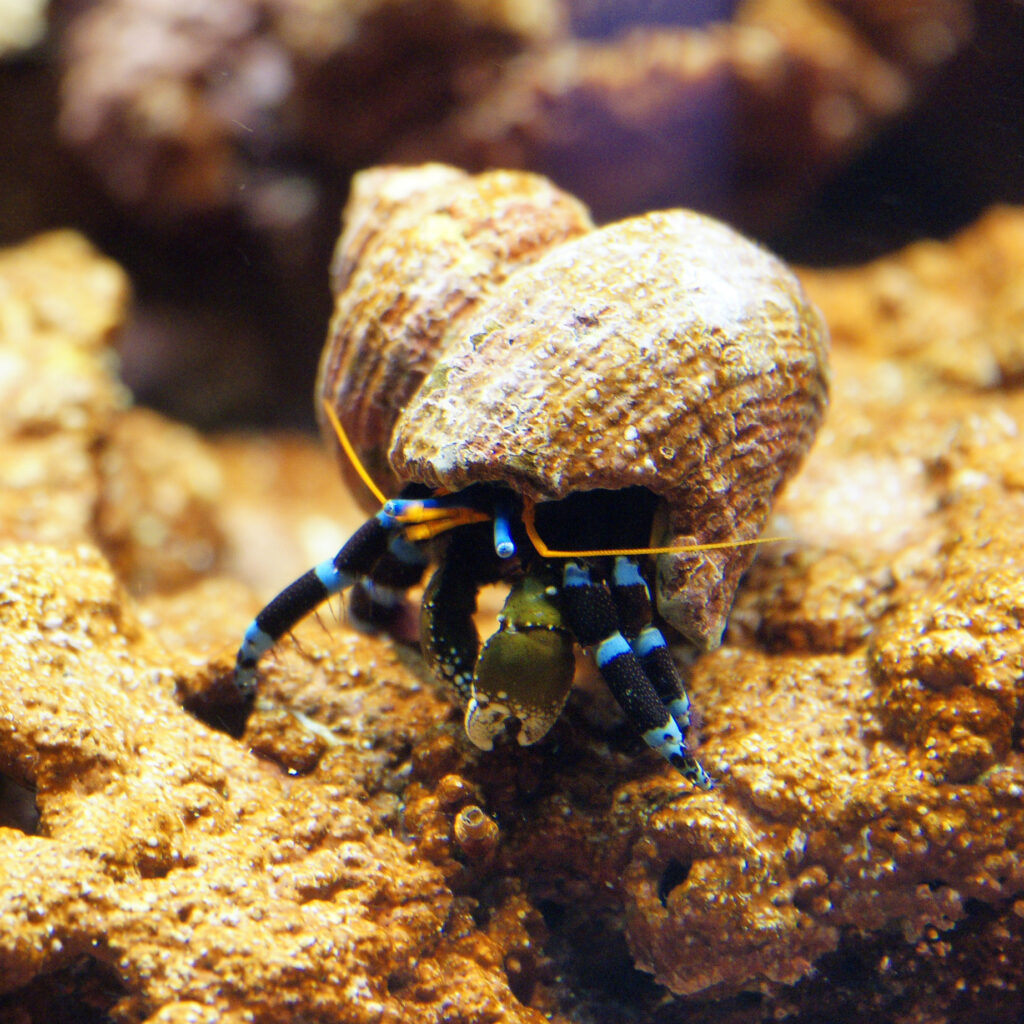
So, the next time you come across a hermit crab, remember the fascinating facts and trivia you’ve learned about these remarkable creatures and take a moment to appreciate the wonders they bring to the natural world.
FAQ: Diving into an Assortment of Interesting Facts and Tidbits About Hermit Crabs
- What are some fun facts about hermit crabs?
- Hermit crabs are scavengers and will eat what they can find on the ground, including dead animals.
- Purple Pincers, a common hermit crab species in the pet trade, spend most of their time climbing and burrowing under trees.
- Hermit crabs are omnivorous scavengers, feeding on microscopic mussels and clams, bits of dead animals, and macroalgae.
- Hermit crabs have tiny stiff hairs on their legs and thorax that help them sense their surroundings.
- They prefer warm, dark spaces to hide and are known to seek refuge in shoes and under furniture.
- Despite their name, hermit crabs actually live in large groups and are highly social creatures.
- Hermit crabs communicate through soft, high-pitched chirps that can indicate a territorial dispute or being startled.
- Purple Pincers have modified gills that allow them to breathe on land.
- What is the most common hermit crab species found in the pet trade?
The most common hermit crab species found in the pet trade is the Purple Pincers (Coenobita clypeatus). These hermit crabs originate from the Caribbean and are known for their hardiness. - How do hermit crabs find their food?
Hermit crabs use their antennae to touch and taste new food to ensure it is safe to eat. They have a keen sense of smell and will scavenge for food on the ground. - Are hermit crabs good pets?
Yes, hermit crabs can make fun and interesting pets. They never cease to amaze their owners with their unique behaviors and adaptations. To ensure their well-being, it is recommended to adopt three or more hermit crabs as they are highly social creatures.
Remember, hermit crabs have specific care requirements, including providing them with a warm and humid habitat, a variety of foods, and suitable shells to change into as they grow. Consulting a knowledgeable source or pet care guide is recommended to provide the best care for these fascinating creatures.
